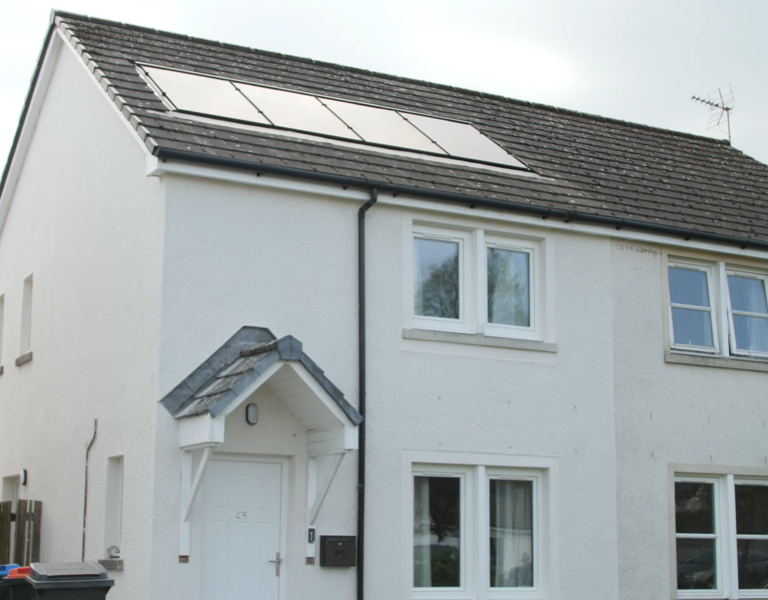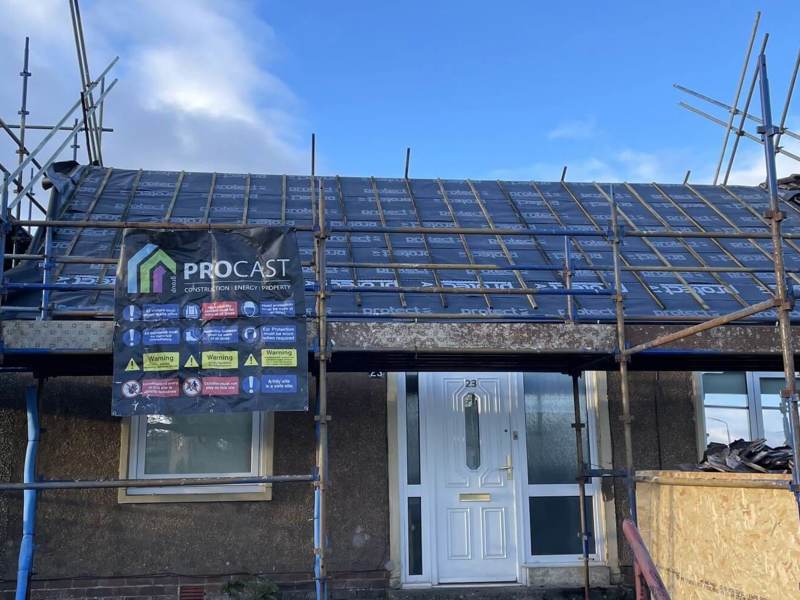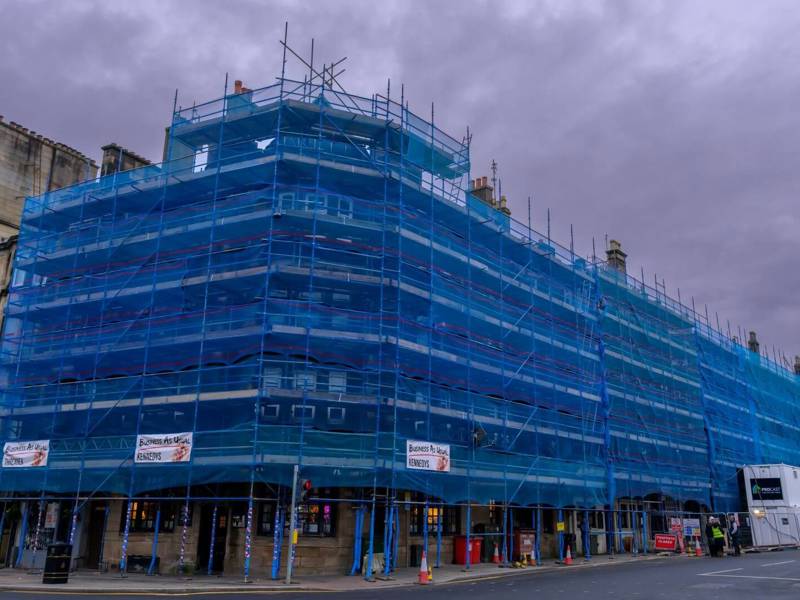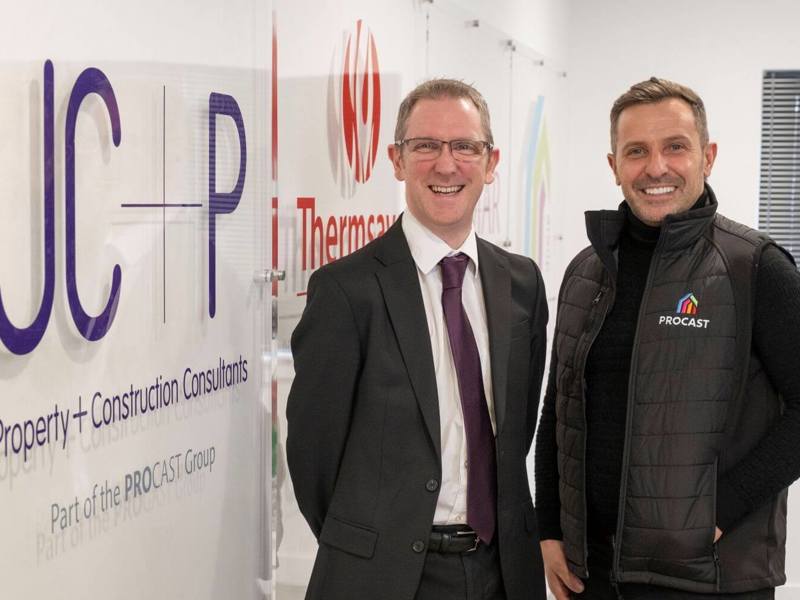15 August 2024
Procast Group leads new study to change retrofitting of the future
Principal Contractor and retrofit specialists, Procast Group, is working on a pioneering project in collaboration with Loreburn Housing Association, John Gilbert Architects and The University of Edinburgh’s School of Engineering that could transform the industry.
Business Development Manager and Procast Group, David Chapman, explains the significance of this UK first.
“Our homes are where we eat, sleep, spend time with loved ones, raise our families, socialise, and, increasingly, work. Retrofitting, our bread and butter, is one of the best bang-for-your-buck ways to make sure homes are fit for purpose.
“Our recent collaborative project with Loreburn Housing Association in Dumfries & Galloway is a first in the UK and gives lots of reasons to remain hopeful about what can be done to keep housing stock in conditions good enough to be called a home.
“What makes this project truly unique is the external brickwork of the properties were carefully taken down to access the timber kit skeleton. After extensive treatment the brickwork is built back up again, with each wall going through that process in series. Why is this important? The tenant never needs to leave their home.
“Housing associations and councils haven’t got detailed figures to show the impact of different types of retrofit and its worth, so we wanted to provide the highest quality work to show how it is possible to transform poor performing stock into energy-efficient, comfortable living spaces. This project stands as a testament to that commitment.
“Over four months, our team at Procast Group installed three variants of retrofit on six properties. The centripetal force for this project has been Loreburn HA’s sustainability officer, Briony Beattie, who has made this trailblazing project a joy from the start.
“Professor Smith of the University of Edinburgh is leading the rather complex two-pronged study. Their team will compare and analyse statistics that delve into the performance of the retrofit works, and then measure the workforce requirements including a detailed skills analysis; something they will share publicly and hope influences government policy for the coming years.
“Scotframe reported that timber frames accounts for 83% of the housing market, and in England, almost 23% of new homes are timber frame. Famously, they are an eco-friendly initial build, but they are often poor performers regarding energy efficiency ratings. These houses at the centre of the project are not the mid-century draughty houses you have in your head, but instead are only dating back to 2007.
“What makes this project special is the ability to compare different types of deep retrofitting without vacating the tenant – a new phenomenon, especially for timber kit houses. It was tremendously exciting to think these homes could be worked on with minimal disruption to peoples’ daily lives - unthinkable 10 years ago.
“Demolishing and rebuilding homes from scratch is not only financially burdensome, but also significantly carbon intensive. These bricks are also recycled, significantly reducing the waste involved in this project.

This is to be clearly demonstrated both on Professor Smith’s graphs and from in what tenants tell us and Loreburn directly.
The Rolls-Royce standard, AECB, involves all the toys, including External Wall Insulation (EWI) for improved humidity control, Air Source Heat Pump (ASHP) for enhanced temperature regulation and a Mechanical Ventilation with Heat Recovery (MVHR) which boosts both temperature and humidity control in an impressively efficient manner.
“These systems, combined with triple-glazed windows, solar panels, and a battery system, have significantly improved living conditions for tenants. Power usage immediately dropped, with 41kWh being used on March 7th, to around 10kWh for the rest of March.
“As we move into winter, we anticipate more exciting data on the energy efficiency and comfort levels of these retrofitted homes. This pilot project is just the beginning. The insights gained here will be shared with other housing associations and councils, aiming to make retrofitting more attractive and widely adopted.
“We are building a bank of statistics on retrofitting that goes beyond merely carbon reduction. This is to demonstrate a variety of transformative advantages: enhancing skills, creating jobs, fostering a thriving green economy, improving living standards, lowering energy costs and poverty levels, reducing healthcare burdens, reconnecting with nature, and building a resilient community ready for future climate challenges.”
Sustainability Officer for Loreburn HA, Briony Beattie, put it well, saying: “This work is so we can make the right call for all our tenants and arm the 1600 Housing Associations around the UK with the information to do best by their four million tenants. Sharing this valuable retrofit study will mean maximising quality of life within often very limited budgets.”
David continued: “The Scottish Government have a lot to deal with regarding the ‘just transition’, but there needs to be a serious recognition of the comprehensive benefits that are making retrofitting an increasingly compelling choice for housing associations across the UK. There is no spare stock to temporarily house people amid a housing crisis. This project is one step in the right direction.”





